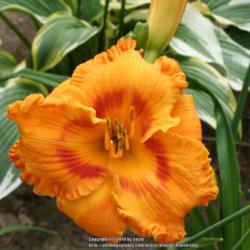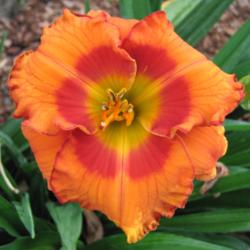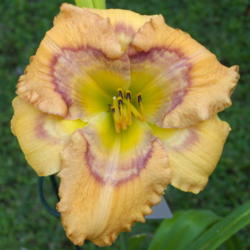To answer my own question. In theory, at least, a clear orange should be feasible in daylilies.
After
@Maryl gave in the info about orange being a combo of yellow/red (and I was reminded), I did some research on plant pigments. Orange is one of the carotenoid pigments and is found in daylilies (not all color pigments are found in blooms of plants). Since most of the carotenoid pigments run the range of yellow to red, I doubt that any combo of carotenoid pigments in those colors would produce a muddy bloom. The effect would more likely be from pale to intense saturation. Throw in some some of the anthocyanin pigments, which have a different molecular composition and muddy, or cloudy, or shades and patterns would probably start appearing. Here is a rather technical scientific study done on H. fulva
http://hortsci.ashspublication... which addresses the orange pigment.
After reading around in different articles, my guess would be that 'Heavenly Jet Fire', which I grow, gets it's color from caretenoid pigments and therefore is probably, technically, a clear orange.

In another case, this seedling from 'Wild Horses' is more of a burnt orange, so all the burnt effect is from mud, if you will. I like it, but I suspect it's derived from anthocyanin pigments involved with the carotenoid pigment and thus is not a clear orange.

Anthocyanin pigments are quite often the blue/lavender colors and when those get involved with carotenoid pigments you end up with interesting, but not always appealing to everyone, effects on the colors our eyes see. Remove other pigments and just leave the orange carotenoid and you should have clear orange. Since that pigment is present in daylilies, I can't see any scientific reason why there wouldn't be clear orange daylilies.
@admmad Maurice, do you know of any studies that would be useful here?







